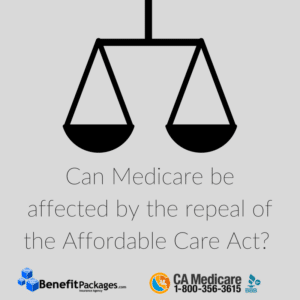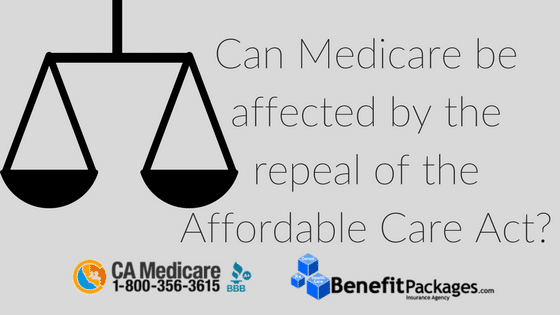 One word, yes. Although the bulk of the ACA deals with the “under 65” market, its provisions for Medicare include:
One word, yes. Although the bulk of the ACA deals with the “under 65” market, its provisions for Medicare include:
- Medicaid expansion
- Minimum essential coverage
- Prohibiting carriers from denying coverage due to pre-existing conditions
- Premium assistance for those of lower income
- Penalties for large employers (50 or more) who fail to offer insurance
Per the Medicare’s trustees, the ACA contains about 165 provisions impacting Medicare; including tax money for program sustainability and benefit improvement. The tax increase and reductions in waste, fraud and abuse extended the life of the Medicare Trust fund for an additional 12 years to at least 2029.
Two major benefit improvements:
- Expanded preventative services: like mammograms or colonoscopies without charging you for the Part B coinsurance or deductible. You also get a free yearly “wellness” visit.
- Reduction in prescription cost: The ACA included a provision to close the Part D coverage gap, AKA “doughnut hole” For 2017; the coverage gap begins once beneficiaries and their plan have together spent a combined $3,700 on covered drugs and ends when the beneficiary’s own spending reaches $4,950- that’s when the catastrophic coverage kicks in. Pre-ACA , the beneficiary had to pay 100% of the gap but now the beneficiary is responsible for no more than 40% of the brand-name drugs and 51% of the plans cost for covered generic drugs. The donut hole continually gets smaller until 2020, where beneficiaries will be responsible for 25% of their brand-name and generic drugs after they meet their deductible.
As you can see the ACA has done many good things, but many of the promised benefits such as keeping your doctors, increased competition of carriers within the marketplace and stemming healthcare inflation never came to fruition. As President Clinton said, “It’s the craziest thing” when he was referring to the fact that premium assistance is only available to people in Ca who make between 138% & 400% of the Federal Poverty Level and above that nothing. The downside of the mandated minimum essential coverage requirements such as maternity and mental health benefits have caused premiums to skyrocket. A family of four making about $97,000 won’t receive premium assistance and will be paying much more than they did Pre-ACA. Clearly our health system was broken but perhaps the entirety of the ACA wasn’t the right fix. One of the issues with the ACA is that not enough young health people joined the rank and file of the insured as the penalty for going without insurance is much less than purchasing it. Prescription drug prices clearly need to be dealt with. Perhaps we need to reexamine the provider reimbursement paradigm: paying providers based on outcome and quality as opposed to only quantity of services rendered. For example, Anthem Blue Cross was dispersing bonuses to hospitals with low staph infection rates.
Let’s hope that a bipartisan group of congressmen and women can address some of the flaws of the ACA while keeping the positive. The old saying, “let’s not throw the baby out with the bath water” comes to mind. Our nation’s health is too important.

